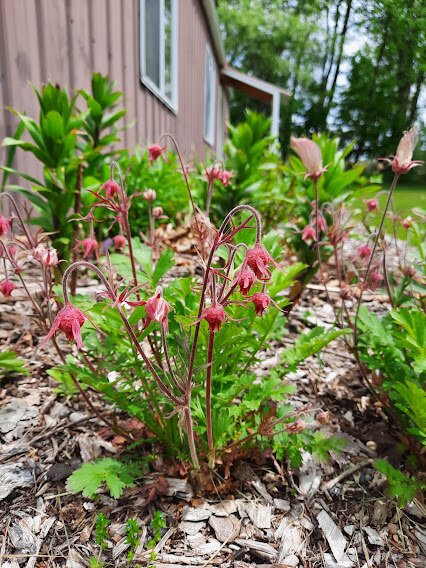Pale Beardtongue (Penstemon pallidus)
Pale Beardtongue flowers attract a number of native bees, especially long-tongued bees, little carpenter bees, and mason bees, including the specialist mason bee Osmia distincta (illinoiswildflower.info). It is the host plant to the Common Buckeye, Baltimore Checkerspot, and 11 other species of butterflies and moths in our area (nwf.org), including the threatened Saunders’ Sallow Moth (mnfi.anr.msu.edu). It seems as though most mammalian herbivores avoid eating the foliage of these plants (illinoiswildflower.info). Pale Beardtongue is presumed extirpated in Michigan, though data may not reflect true distribution since much of the state has not been thoroughly surveyed (mnfi.anr.msu.edu).
Pale Beardtongue flowers attract a number of native bees, especially long-tongued bees, little carpenter bees, and mason bees, including the specialist mason bee Osmia distincta (illinoiswildflower.info). It is the host plant to the Common Buckeye, Baltimore Checkerspot, and 11 other species of butterflies and moths in our area (nwf.org), including the threatened Saunders’ Sallow Moth (mnfi.anr.msu.edu). It seems as though most mammalian herbivores avoid eating the foliage of these plants (illinoiswildflower.info). Pale Beardtongue is presumed extirpated in Michigan, though data may not reflect true distribution since much of the state has not been thoroughly surveyed (mnfi.anr.msu.edu).
Pale Beardtongue flowers attract a number of native bees, especially long-tongued bees, little carpenter bees, and mason bees, including the specialist mason bee Osmia distincta (illinoiswildflower.info). It is the host plant to the Common Buckeye, Baltimore Checkerspot, and 11 other species of butterflies and moths in our area (nwf.org), including the threatened Saunders’ Sallow Moth (mnfi.anr.msu.edu). It seems as though most mammalian herbivores avoid eating the foliage of these plants (illinoiswildflower.info). Pale Beardtongue is presumed extirpated in Michigan, though data may not reflect true distribution since much of the state has not been thoroughly surveyed (mnfi.anr.msu.edu).
Life Cycle: Perennial
Sun Exposure: Full-Partial
Soil Moisture: Medium-dry, Dry
Height: 12 inches
Plant Spacing: 6-12 inches
Bloom Time: May-July
Bloom Color: White
Advantages: Bird Favorite, Pollinator Favorite
Host: Common Buckeye, Baltimore Checkerspot, and 11 other species of butterflies and moths use this as a caterpillar host plant in our area (nwf.org)
Species of Concern: State Status: Presumed extirpated (legally 'threatened' if rediscovered). State Rank: Presumed extirpated (mnfi.anr.msu.edu)
Specialist Bee: Mason Bee Osmia distincta
Beneficial for Endangered or Threatened Species: Saunders' Sallow Moth (Sympistis saundersiana) (mnfi.anr.msu.edu)





